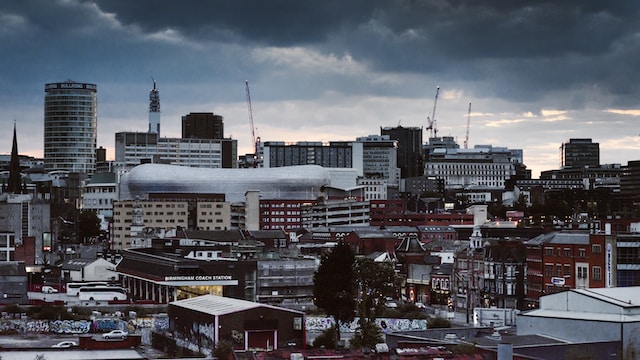
Comment Writer Nathan Farrington welcomes Birmingham’s new city plan but argues that fast delivery is needed
When planning Birmingham’s development, the City Council has usually been bold. Their proposals, incentivised by the city’s mantra of ‘Forward’, have led to distinct phases in Birmingham’s history.
In the post-war period, Birmingham’s prosperity as a hub of manufacturing contributed to the need to design a city that reflected the technical innovation and optimism of the era. Brutalist architecture and major roads in the city centre ensued, with the destruction of Birmingham’s Victorian heritage reflecting the desire to move ‘Forward’.
It was during this period that Birmingham became a city designed for the professional. Housing developments outside of the city centre became more extensive while road construction encouraged inhabitants to commute from suburban areas to central Birmingham for working purposes.
bold planning must be complemented by the effective delivery of these designs
More recently the Council has dismantled aspects of this legacy by demolishing the Old Central Library and introducing a Clean Air Zone. These actions highlight attempts to reinvent Birmingham once more as a sustainable and pedestrian-centered urban area, accessible to the city’s students.
The plans unveiled in Our Future City provide further insight into the Council’s vision for the Birmingham of 2040. This framework echoes the sentiment behind current projects taking place across Birmingham and reaffirms the desire to reduce carbon emissions and expand job opportunities in the city centre. Yet, it remains to be seen whether current students will benefit from these announcements while they study in Birmingham.
When completed, the plan outlined by the Council would make Birmingham a more attractive location for residents. One of the headline proposals is to convert the A38 into a ‘tree-lined Greenway’. The road, one of the remaining features from Birmingham’s post-war era, has been criticised for dividing neighbourhoods and restricting travel to the Jewellery Quarter and Central West of Birmingham.
The changes made to limit motor congestion are complemented by attempts to improve public transport services. An improvement to the tram services is discussed in the document while opening a Greenway on the A38 would facilitate safer and broader cycle routes. These forms of transport are essential to Birmingham’s high student population who rely on these services to travel.
The Council recognises that Birmingham and its students need a ‘connected’ city. Removing major roads in the city centre certainly helps to reconnect divided neighbourhoods while rail improvements and the completion of HS2 will facilitate swifter travel across the region and the country at large.
However, bold planning must be complemented by the effective delivery of these designs.
For current students, the primary concern with this new document is that the proposals will not benefit them directly. The reality is that for students graduating this year, other major UK cities offer more efficient transport systems, lower greenhouse gas emissions, and more job opportunities. Birmingham faces losing this pool of talent if changes are insufficient.
Birmingham needs to become denser with a greater concentration of homes in the city centre
For instance, public transport transformations across Birmingham have not been completed on time. The University Station renovation and Camp Hill Line developments are still incomplete a year after expected while Metro renovations in the city centre will not be finished until at least 2025. Meanwhile, Manchester is introducing a publicly-owned transport network with the first services expected to start by September.
Although the pandemic was instrumental in delaying Birmingham’s modifications, the city should aim to become more ambitious with the completion of projects. Green targets and tree planting are useful, but these objectives should be achieved as soon as possible to reduce carbon emissions. Students also require more affordable accommodation in the city. The plan shows that Birmingham needs to become denser with a greater concentration of homes in the city centre. Construction of these sites needs to be delivered at a swift rate to provide more options to current students following graduation.
The Council’s plan appreciates the need to cultivate a city that enhances student experiences, but the next step must be to achieve these objectives in a shorter timeframe. Doing this ensures that inhabitants currently at universities in Birmingham will benefit from the plan and stay in the city following graduation. If the framework is not delivered, then students will suffer, and Birmingham’s latest vision will be unable to move ‘forward’.
For more comment articles check out the stories below:
The Beauty Industry and Cosmetic Surgery: Influences and Pressures on the Postmodern Body
Comments